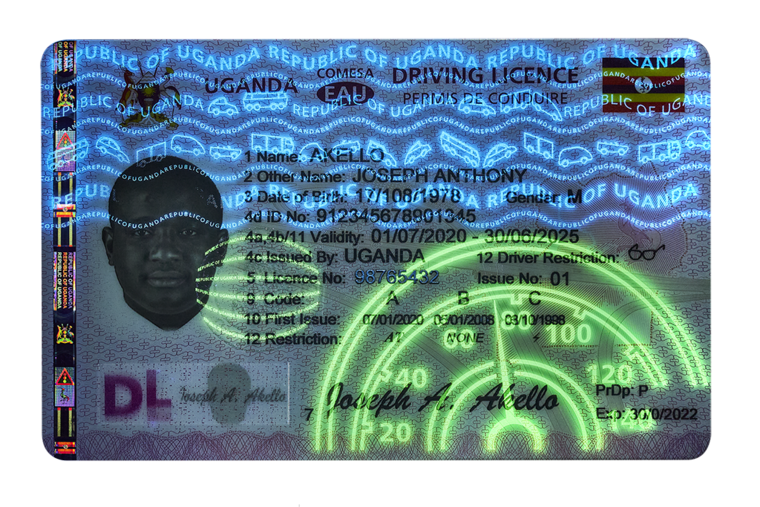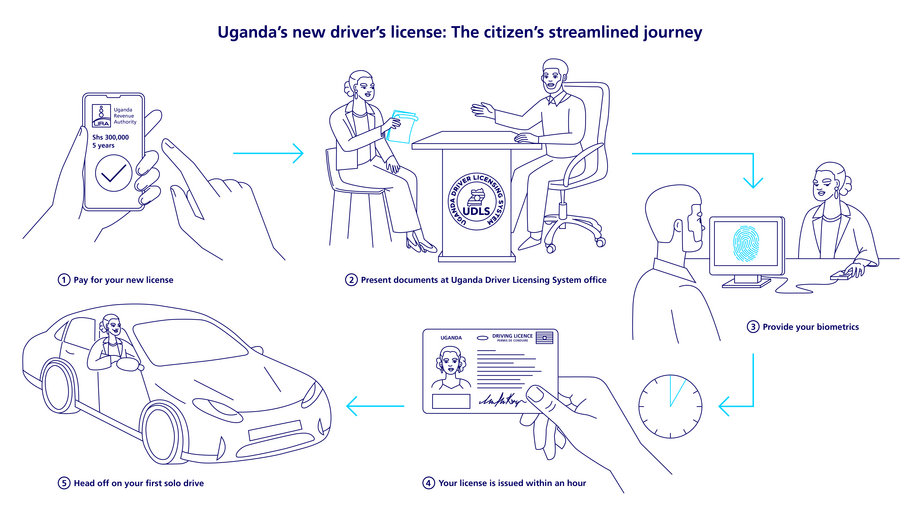Meeting KPIs – and citizens’ expectations
The end-to-end issuance process can be completed in less than an hour, a KPI set by the Ugandan government’s team. Since the system went live in March 2021, that has been consistently met, says Dr. Aweke Lemma, Managing Director Veridos Uganda. “But the reality for most citizens is that the whole document-checking, ID-capture, and new-license-issuance process has been reduced to around 30 minutes,” he says.
For Dembe’s cousin, who also recently passed her driving test but who lives in a village far from Kampala, there is also a new streamlined process for obtaining a full license. She can visit her nearest regional office of the UDLS (one of seven), where the turnaround from enrollment is also fast. Her data is collected locally, communicated for processing to the centralized system, and her card sent out ready for collection within two days (the target is 36 hours).
For people living in more remote areas, there are also plans for a mobile service – minivans equipped with all the data capture and communications equipment that will offer citizens a rapid enrollment and issuance service.
Of course, at all the centers, the performance of the system that makes the citizen’s experience so smooth is dependent on the availability of and access to integrated services such as the National Identification & Registration Authority (NIRA) or the Uganda Revenue Authority payment system.
There are more benefits to the citizen than just convenience. The state-of-the-art security system uses a centralized database and so eliminates any uncertainties about the document being original and valid, and whether the driver has any endorsements or outstanding fines. This is essential in reducing the number of unqualified drivers on the roads who put people’s lives at risk.





